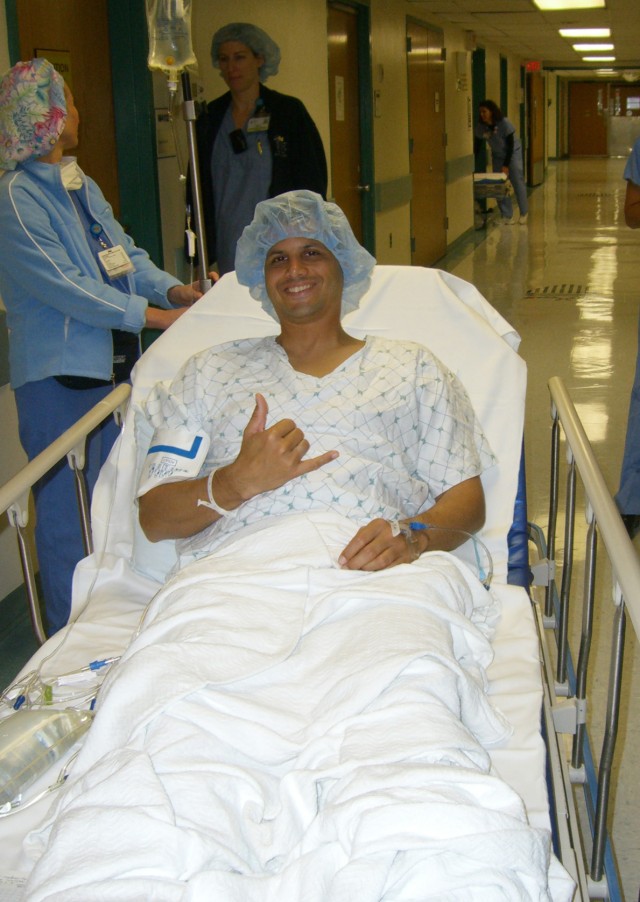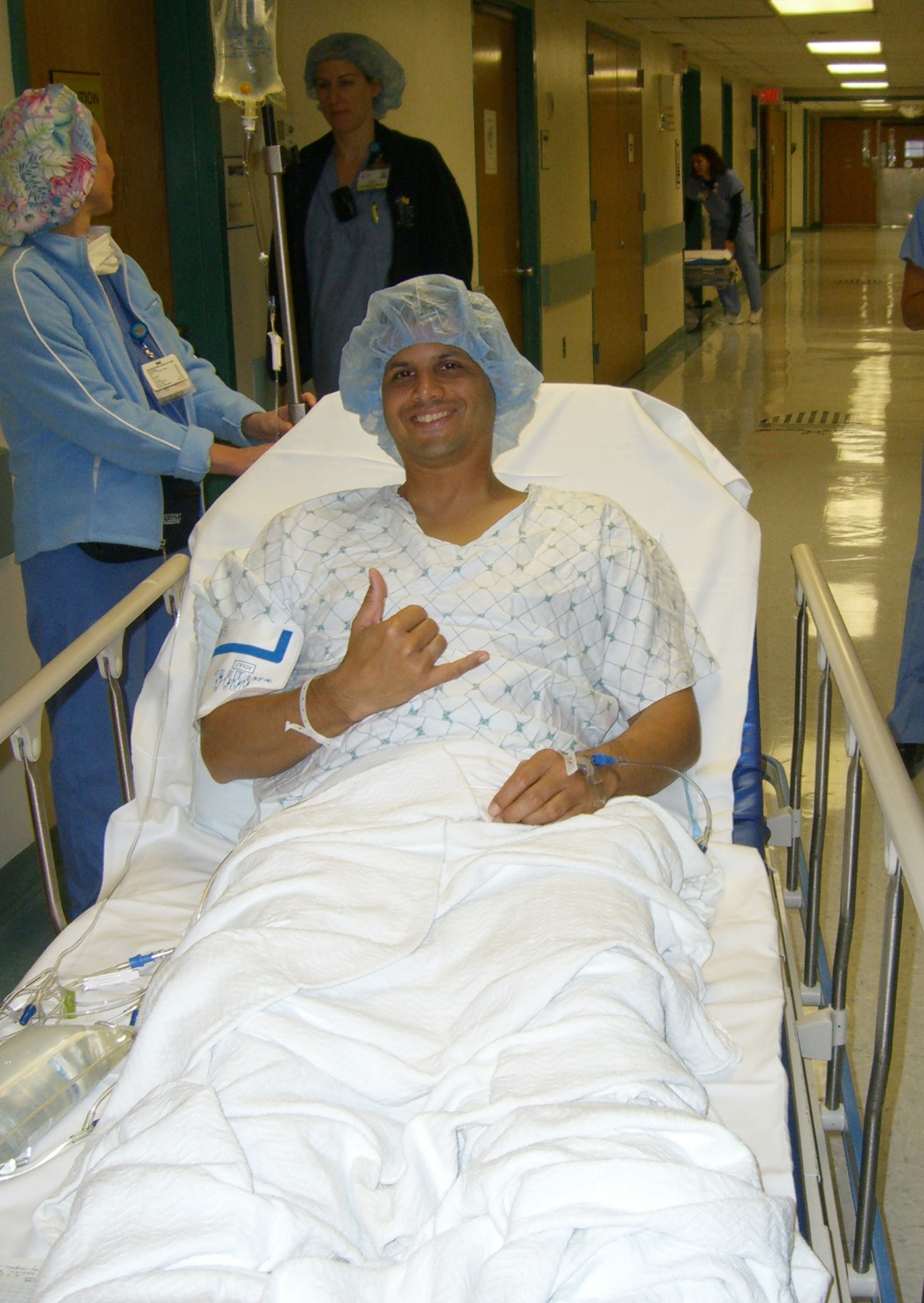
SCHOFIELD BARRACKS, Hawaii - A simple swipe of the mouth with a cotton swab more than five months ago led Sgt. 1st Class Jorge Cruz on a life-saving adventure 5,000 miles away.
Cruz, an operations noncommissioned officer in charge (NCOIC), U.S. Army Garrison-Oahu, was a participant in the C.W. Bill Young Department of Defense (DoD) Bone Marrow Program held here in May. Along with hundreds of other donors, Cruz's DNA was sampled by scraping a Q-tip inside his cheek, and sent to a lab in Washington, D.C.
In July, Cruz was contacted because he was a possible match and began the process to determine whether or not he could donate. Numerous questionnaires, blood samples and doctors' appointments followed.
A few weeks later, Cruz received a phone call informing him that he was the best match for a family member in need of a bone marrow transfer.
"I was very excited when I got the word that I was a match," said Cruz. "I just never figured that I'd be selected so early."
Cruz and a companion traveled to Washington for the procedure. As the sun rose Oct. 22, Cruz was being prepped for surgery.
"I don't remember any of the surgery," said Cruz. "I was rolling out of the doors to begin and the next thing I knew I was being wheeled into recovery."
The successful operation took less than two hours. As Cruz lay on his stomach, the doctor made two small incisions into his back. Marrow was then extracted from his pelvic bone using a syringe.
Soon after, Cruz began the recovery process.
"The recovery was not as bad as indicated by many people who have heard about the procedure, well not for me at least," said Cruz. "After the surgery I was in pain, but not so significantly."
Cruz said the pain was minor and felt like a broken rib. Walking and bending over was troublesome for the first few days, but donating to help another in need was rewarding enough to endure a few days of slight pain.
"Through the whole process I was thankful for just being selected and hoping that my donation made a difference," said Cruz.
After a four-day whirlwind trip, Cruz began his journey back to Oahu.
The program's overall objective is the development and application of a life-saving technology for those with marrow damage resulting from radiation or certain chemical warfare agents. Currently, there are more than 500 people in the DOD family, including family members and active duty personnel, with disorders like leukemia who are in need life-saving bone marrow transplants.
The DOD has been putting people on the national bone marrow donor registry since 1989 and has grown to the number one center in the country. In 2007, 421 DOD volunteers donated marrow.
"The only encouragement I could give is that you as a person will heal from the operation and life will continue. But if you are selected as a match and do not donate, that recipient may not be so lucky," said Cruz. "Just the feeling of saving a life was enough for me."

Social Sharing